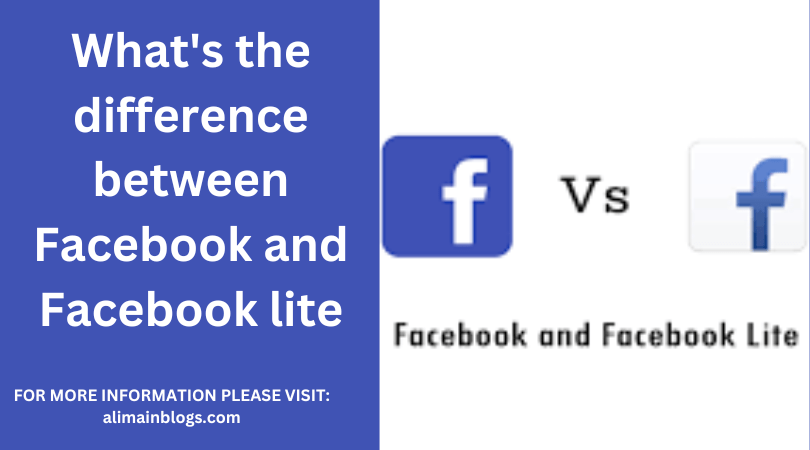Facebook and Facebook Lite represent two iterations of a singular social media platform. But they serve distinct user requirements and device capabilities. The primary distinctions between these versions can be succinctly outlined in terms of their functionalities, operational efficiency, resource demands, and intended user base.
1. Functionality:

Facebook, the regular version of the platform, offers a wide range of features and functions. This includes sharing posts, photographs, videos, status updates, and links. Through the Messenger program, users may participate in group activities, create events, play games, access various multimedia features, and have real-time chats.
In contrast, Facebook Lite takes a more condensed approach, aimed at consumers looking for a more simplified experience. It allows access to fundamental activities such as sharing posts, photographs, and updates. But it excludes some resource-intensive features such as specific animations, sophisticated graphics, and detailed visual upgrades.
2. Performance:
Facebook is designed to provide a luxurious and engaging user experience through outstanding graphic elements, animations, and interactive components. This design decision can result in sluggish performance, longer loading periods, and greater data usage, particularly on devices with restricted processing capacity and slower internet connections.
Meanwhile, Facebook Lite has been rigorously optimized for performance on devices with limited processing power and memory. It addresses the needs of consumers in areas with slow or inconsistent internet connections. As well As those using obsolete devices, by requiring fewer resources, promoting faster loading times, and lowering data consumption.
3. Resource Prerequisites:

The normal Facebook app requires more storage space and places greater demands on a device’s CPU and RAM due to its comprehensive functionality and sumptuous aesthetics. As a result, it is unsuitable for entry-level smartphones or devices with limited storage capabilities.
The architecture of Facebook Lite, on the other hand, is designed to be lightweight and efficient. It takes up substantially less storage space, making it ideal for devices with limited storage capacity. Furthermore, it places less strain on processing capabilities and memory, resulting in smoother performance on older or less powerful devices.
4. Target User Demographics:
Facebook offers to a wide range of users that want access to a wide range of tools for networking, entertainment, communication, and information dissemination. It focuses on people who own modern smartphones and have access to high-speed internet connectivity.
In contrast, the primary focus of Facebook Lite is on people in emerging economies or locations with insufficient internet access. It is precisely designed for people who use entry-level smartphones or older devices and may not have constant high-speed internet connectivity. Facebook Lite allows these users to access basic social media functions without experiencing the performance issues associated with the full Facebook application.
conclusion
In summation, while both Facebook and Facebook Lite are offshoots of the same social media platform, they are adapted to the varying demands of users and the capabilities of devices. Facebook extends an inclusive range of features paired with high-caliber visuals, whereas Facebook Lite offers a simplified encounter that is optimized for performance on devices constrained by limited resources and slower internet connectivity. The choice between the two hinges on variables like device specifications, internet access, and user predilections concerning functionalities and performance.
=======================
FOR MORE INFORMATION PLEASE VISIT: alimainblogs.com
